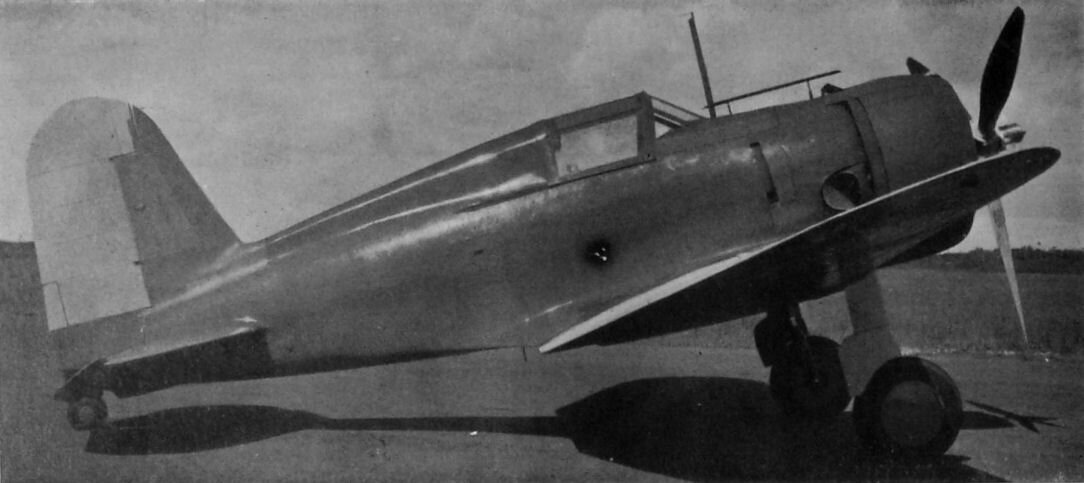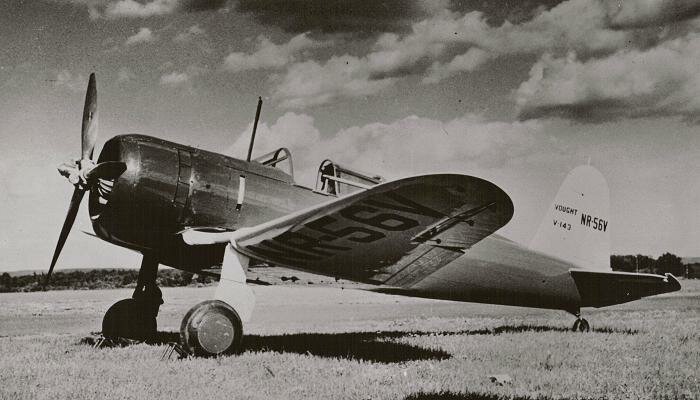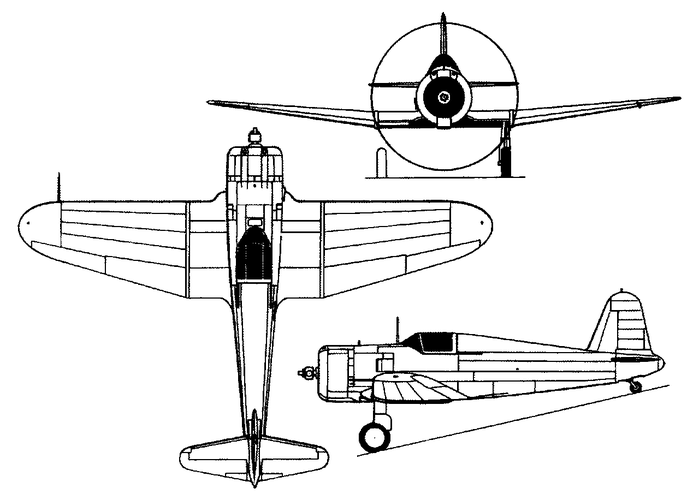PabloSniper
ACCESS: Confidential
- Joined
- 16 June 2024
- Messages
- 52
- Reaction score
- 54
Hello everyone!
Despite being a prototype fighter, the Northrop 3A was not successful, and I didn't find much material about it. I think it would be interesting to have a topic about it.



The Northrop 3A was powered by an air-cooled, supercharged, 1,535.387-cubic-inch displacement (25.160 liters) Pratt & Whitney Twin Wasp Junior, two-row, 14-cylinder radial engine. The specific model is not known but most sources state that it was rated at 700 horsepower.
The prototype was unarmed, but was planned to carry a single .30-caliber or .50-caliber machine gun.




In short, Northrop took the XFT naval fighter project, which already had problems with spin entry, and made the 3A, which still had this problem.
Vought bought this project from Northrop and made some modifications, calling it the V-141, without solving the problem.
So they decided to increase the fuselage and make the V-143.
That also did not solve the problem.
Despite being a prototype fighter, the Northrop 3A was not successful, and I didn't find much material about it. I think it would be interesting to have a topic about it.
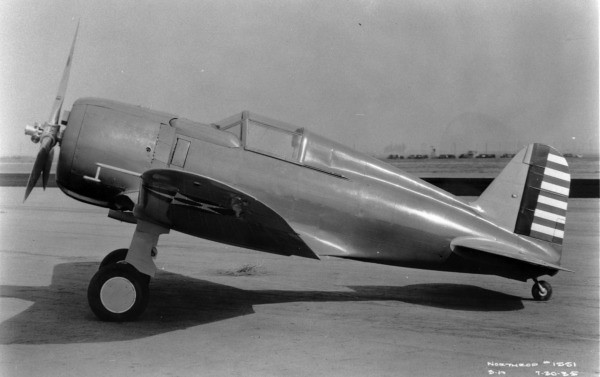
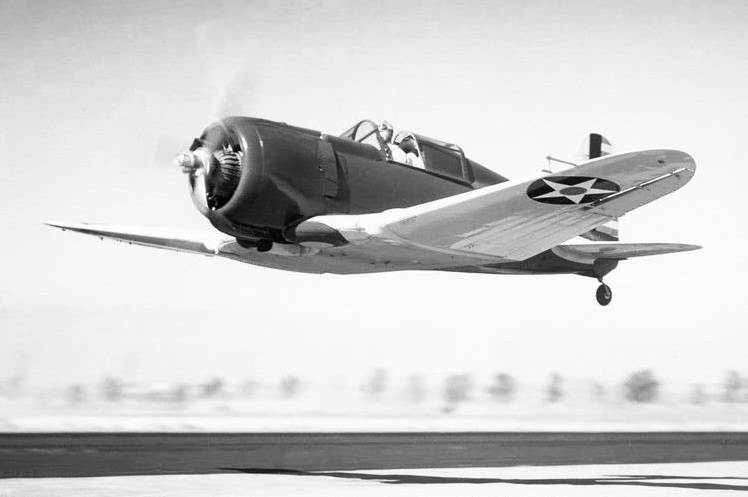
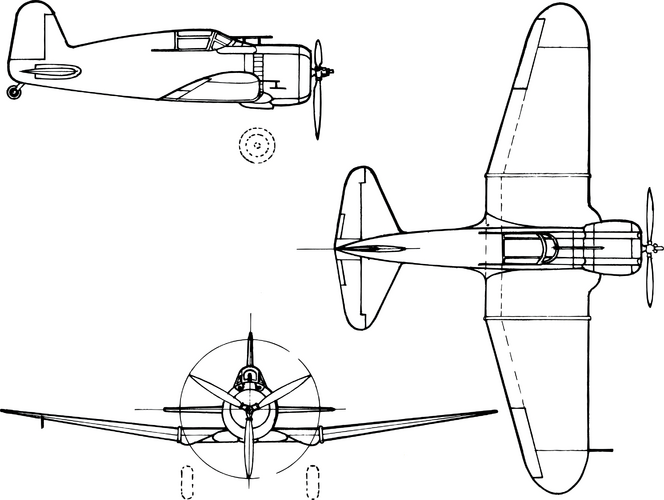
The Northrop 3A was powered by an air-cooled, supercharged, 1,535.387-cubic-inch displacement (25.160 liters) Pratt & Whitney Twin Wasp Junior, two-row, 14-cylinder radial engine. The specific model is not known but most sources state that it was rated at 700 horsepower.
The prototype was unarmed, but was planned to carry a single .30-caliber or .50-caliber machine gun.
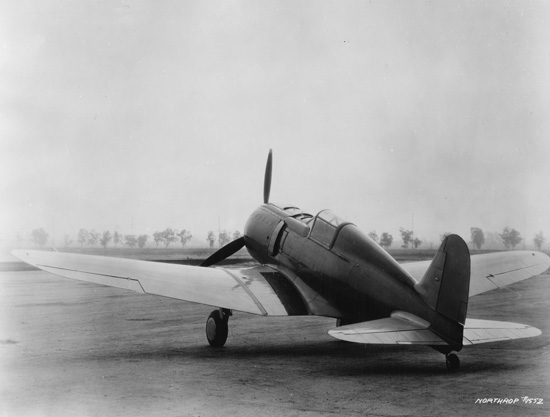
During flight testing, the Northrop entry was found to have undesirable spin characteristics and was returned to the builder for further work.
On the afternoon of 30 July 1935, 1st Lieutenant Arthur Henry Skaer, Jr., Air Corps Reserve, who was employed by Northrop as a test pilot, took off from Mines Field (now Los Angeles International Airport, LAX) to conduct spin tests.
Skaer never returned. An extensive search was conducted of the nearby Palos Verdes Peninsula and the southern California coastal waters. An Air Corps search plane spotted what appeared to be fresh oil on the surface, but no other sign of Lieutenant Skaer or the Northrop 3A were ever found.
Northrop 3A 30 July 1935
The Northrop 3A was briefly tested at Wright Field where it was found to be somewhat unstable and prone to spinning and was returned to Northrop for modifications. During tests over the Pacific on July 30, 1935, piloted by First Lieutenant Frank Scare, the airplane failed to return to base. No trace of the aircraft or pilot was ever found. The design of the Model 3A was subsequently sold to Chance Vought Aircraft which was further developed as the V-141.
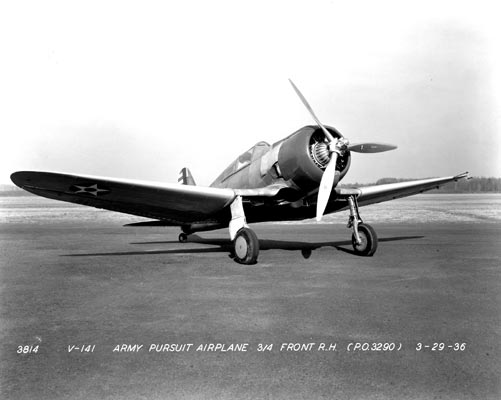
Vought's design team had little time to work on the new fighter if it was to compete in the Air Corps competition, and changes made to the design purchased from Northrop were relatively small, with an enlarged rudder being fitted in a bid to solve the handling problems of the XFT and 3A, while the undercarriage and engine cowling were also modified. In this form, the prototype fighter, designated Vought V-141 by the manufacturer, made its first flight on 29 March 1936. Like the 3A, the V-141 was a low-wing monoplane with a retractable tailwheel undercarriage and an enclosed cockpit. It was powered by a 750 hp (560 kW) Pratt & Whitney R-1535 Twin Wasp Junior radial engine, a slightly more powerful version of the engine that powered the 3A.
The competing bids were evaluated by the Air Corps in April 1936. Vought offered to sell V-141s at a unit price of $34,148 for a batch of 25 aircraft (excluding engines and Government provided equipment), reducing to $16,041 for a batch of 200 aircraft. Testing showed that the V-141 still had poor handling and was prone to spinning, and also suffered from tail flutter, leading to it being rejected. The primary winner of the competition was Seversky, with 77 P-35s being ordered.
Vought then offered it for export, modifying it with larger tail surfaces and renaming it the Vought V-143. This was offered to Argentina as a replacement for its obsolete Dewoitine D.21s. When it came to be tested in Argentina, Curtiss-Wright representatives, eager to sell the Curtiss 75, pointed out that the Vought was fitted with an anti-spin parachute in the tail. When the Argentines demanded that the spin characteristics be demonstrated without the parachute, Vought refused, and the Curtiss 75 was selected instead.

Vought V-141 - Wikipedia
en.wikipedia.org
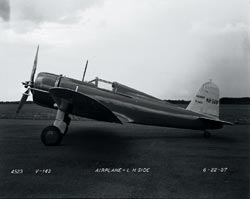

In short, Northrop took the XFT naval fighter project, which already had problems with spin entry, and made the 3A, which still had this problem.
Vought bought this project from Northrop and made some modifications, calling it the V-141, without solving the problem.
So they decided to increase the fuselage and make the V-143.
That also did not solve the problem.
Last edited:


